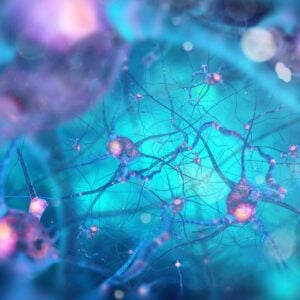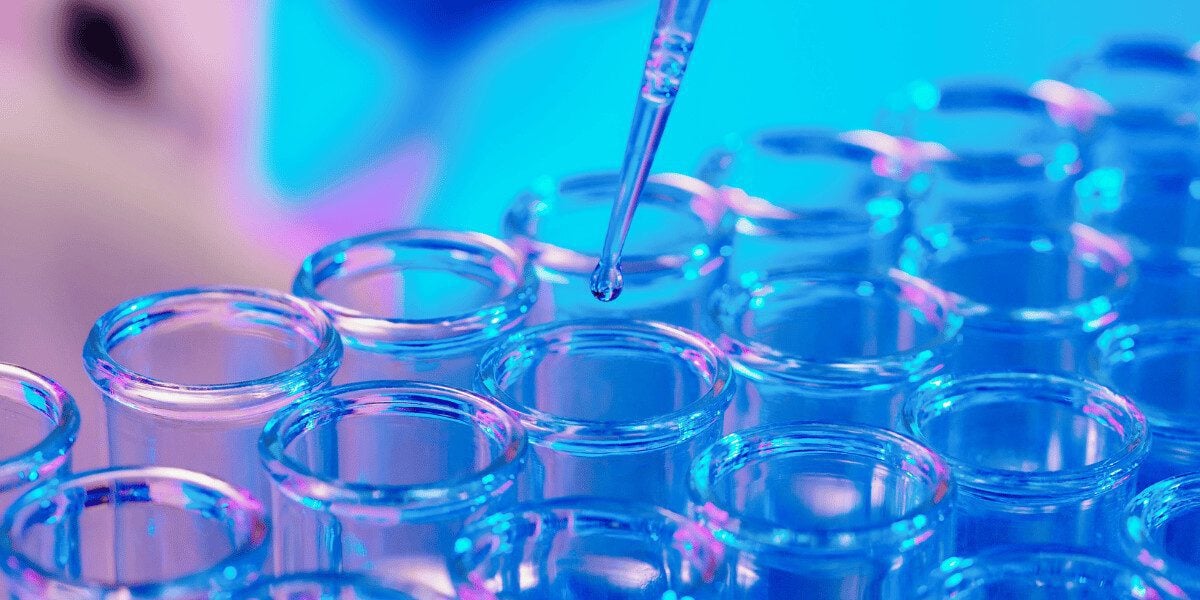 With no specific test to confirm ALS, diagnosis is a process that involves lab tests, neurological tests and observation. For patients, it can be a frustrating journey: On average, it takes about a year to get a confirmed ALS diagnosis.1
With no specific test to confirm ALS, diagnosis is a process that involves lab tests, neurological tests and observation. For patients, it can be a frustrating journey: On average, it takes about a year to get a confirmed ALS diagnosis.1
With familial (inherited) ALS, genetic testing may be able to determine whether a person has a gene mutation linked to the disease. But more than 90% of people with the disease have no family history of ALS. Moreover, the mere presence of the mutation does not mean the individual will develop ALS. Genetic testing can establish only that a person has one of the mutated genes associated with the disease.2
An ALS diagnosis requires the following: 3,4
- Signs of lower motor neuron degeneration
- Signs of upper motor neuron degeneration
- Progression of symptoms from to other regions, and
- An absence of evidence of other diseases that could explain the symptoms
The journey begins with a referral to a neurologist.
How is ALS diagnosed?
There is not a specific test to diagnose ALS, it typically requires a neurologist to perform a diagnosis. So the first step is for your primary care provider to refer you to a neurologist.
During that first neurology visit, you’ll be asked about your symptoms and medical history, as well as your family health history and even about where you’ve lived and worked.
Next, the neurologist will conduct a thorough physical exam, assessing muscle strength, reflexes, coordination, and sensory functions. Subsequently, various tests are performed to exclude alternative causes of the symptoms.
These may include blood and urine analyses to rule out conditions like thyroid disorders, HIV, vitamin B12 deficiency, and autoimmune diseases. Specialized tests such as electromyography (EMG) and nerve conduction studies, as well as Magnetic Resonance Imaging (MRI), may be employed to further refine the diagnosis.
Finally, you’ll undergo tests to eliminate other possible causes of the symptoms.5
The battery of tests may include comprehensive blood and urine analyses. These examinations are designed to identify and exclude various medical conditions that might present with symptoms similar to those of ALS. Thyroid disorders, HIV, vitamin B12 deficiency, autoimmune diseases, and other systemic conditions are carefully scrutinized to eliminate any potential confounding factors.
If deemed necessary based on the individual case, Magnetic Resonance Imaging (MRI) might be recommended. This imaging technique allows for a detailed examination of the internal structures, particularly the brain and spinal cord, helping to identify any structural abnormalities or lesions that could be contributing to the observed symptoms.
Understanding the physical exam
This part of the exam focuses on muscle strength, reflexes, coordination and sensation. Among the things the neurologist will be looking for are:6,7
- Muscle weakness in the limbs (often on just one side of the body)
- Muscle weakness in the mouth and tongue; this would show up as slurred or slow speech
- Muscle twitches — called fasciculations
- Hyperactive reflexes and muscle spasticity
- Emotional and cognitive changes
The tests for ALS come next.
Blood and urine: A starting point
An analysis of blood and urine samples can eliminate other possible diagnoses, including thyroid disorders, HIV, vitamin B12 deficiency, hepatitis, autoimmune diseases and certain types of cancer.
Blood tests can also measure creatine kinase, an enzyme that’s released when muscles are injured or die. Recent research suggests that it is significantly elevated in people with ALS and that higher levels appear to correlate with better survival rates in patients. That means they can help with prognosis as well as diagnosis.8
Depending on your work or environmental history, the doctor may also test your urine for heavy metals.
Does Vitamin B12 Deficiency Mimic ALS?
Vitamin B12 deficiency can share some symptoms with ALS, leading to potential confusion in diagnosis. Both conditions can manifest symptoms related to the nervous system, such as muscle weakness, fatigue, and difficulty with coordination.
It’s crucial to note that while there may be some overlapping symptoms, these two conditions have distinct causes and mechanisms.
Scans, biopsies and other diagnostic tests for ALS
The next step is to conduct tests to help rule out other possible conditions. These tests include:9,10,11,12
EMG
An electromyogram (EMG) assesses the health of muscles and the nerve cells that control them (motor neurons). It does this by evaluating electrical activity in response to a nerve’s stimulation of the muscle. The doctor inserts a thin needle electrode through the skin into various muscles.
In the context of ALS, the EMG is instrumental for several reasons. Firstly, it detects electrical activity in muscles. During the procedure, a thin needle electrode is inserted into the muscle, and the EMG measures the electrical activity present when the muscle contracts. In ALS patients, this activity may be reduced, reflecting the impaired muscle function due to the disease.
Does EMG Rule Out ALS?
No, an electromyography (EMG) alone does not definitively rule out or confirm ALS.
While EMG is a valuable diagnostic tool in assessing muscle and nerve function, ALS diagnosis typically involves a comprehensive approach that considers various clinical and laboratory factors.
Nerve Conduction Study
A nerve conduction study is usually done along with an EMG. It stimulates specific nerves and records how fast — and how well — they send the impulse to the muscle. Typically, the nerve is stimulated with electrode patches attached to your skin. (This is also called a nerve conduction velocity test.)
The procedure typically involves placing small, flat electrode patches on the skin over the nerve to be tested. One electrode stimulates the nerve with a very mild electrical impulse, which might feel like a quick electric pulse or a tingling sensation to the patient. This impulse travels along the nerve, and the resulting electrical activity is recorded by the other electrodes. The speed at which the impulse travels is measured as the nerve conduction velocity.
MRI
An MRI can reveal other causes for your symptoms, such as spinal cord tumors or herniated disks.
Magnetic Resonance Imaging (MRI) is a highly valuable diagnostic tool, especially when investigating the underlying causes of various neurological symptoms. Unlike an EMG or a nerve conduction study that specifically assesses muscle and nerve function, an MRI provides a detailed image of the body’s internal structures, particularly soft tissues like the brain and spinal cord.
By providing detailed images of the spinal cord, vertebrae, and surrounding tissues, an MRI helps distinguish these conditions from other diseases that affect nerve function, like ALS or multiple sclerosis. This distinction is crucial because the treatment for spinal cord tumors or herniated disks differs significantly from the treatment for neurodegenerative diseases.
- Lumbar puncture (spinal tap) involves taking a sample of cerebrospinal fluid via a small needle inserted in the lower back. For many patients, this test may not be necessary.
- Muscle biopsies are rarely performed as part of an ALS diagnostic workup. However, they are sometimes needed to look for muscle-specific diseases. During a muscle biopsy, a small bit of muscle is removed for analysis while you’re under local anesthetic.
ALS is a progressive disease, which means that it gets worse over time. As a result, your diagnosis journey may pause here. That’s because the neurologist will likely recommend repeating all the tests in about six months to confirm the diagnosis.13
What is an ALS Tongue Test?
There isn’t a specific “ALS tongue test” per se, but changes in tongue function can be part of the broader clinical assessment when diagnosing ALS (Amyotrophic Lateral Sclerosis).
It’s important to note that while changes in tongue function can be a symptom of ALS, they are not specific to ALS alone and can be seen in other neurological or muscular disorders. Diagnosing ALS typically involves a combination of clinical evaluation, electromyography (EMG), nerve conduction studies, and the exclusion of other potential causes of the symptoms.
How to tell if you have ALS: You can’t
ALS symptoms vary, but its onset typically manifests in one of two ways: either as weakness in the limbs, called limb (or spinal) onset, or difficulty in speaking or swallowing, termed bulbar onset.14 But merely having these symptoms doesn’t mean you have ALS.
As we discussed before, ALS mimics other diseases, and other diseases mimic ALS. That’s why it’s so important to get a referral to an experienced neurologist if you and your primary care provider think you may have ALS.
The sooner you can get a definitive diagnosis, the better. Even though ALS is incurable, treatments alleviate symptoms. The sooner you have that diagnosis, the sooner you can begin treatments that can improve your prognosis and quality of life.
Sources
1 https://rarediseases.org/rare-diseases/amyotrophic-lateral-sclerosis/
2 Fanos, J., Gronka, S., Wuu, J. et al. Impact of presymptomatic genetic testing for familial amyotrophic lateral sclerosis. Genet Med 13, 342–348 (2011). https://doi.org/10.1097/GIM.0b013e318204d004
3 https://alsnewstoday.com/als-diagnosis/
4 https://www.als.org/navigating-als/resources/fyi-criteria-diagnosis-als
5 National Institute of Neurological Disorders and Stroke op. cit.
6 https://www.massgeneral.org/neurology/als/patient-education/diagnosing-als
7 https://www.webmd.com/brain/how-doctors-diagnose-als
8 Chen, X.-P. et al.: Creatine kinase in the diagnosis and prognostic prediction of amyotrophic lateral sclerosis: a retrospective case-control study. Neural Regeneration Research 16 (2021)
10 https://www.hopkinsmedicine.org/health/treatment-tests-and-therapies/neurology
11 https://www.massgeneral.org/neurology/als/patient-education/diagnosing-als
12 https://medlineplus.gov/lab-tests/electromyography-emg-and-nerve-conduction-studies/
13 https://www.webmd.com/brain/how-doctors-diagnose-als




